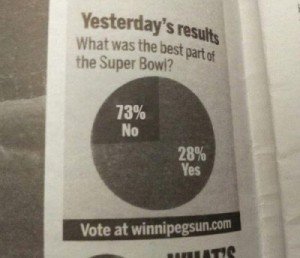 Last week at the HR Technology Conference, I had the opportunity to sit with some of the great leaders, analysts, and voices in the HR industry and talk shop for three days. I also went to some awesome parties, gambled, smoked a cigar, and drank copious amounts of caffeine.
Last week at the HR Technology Conference, I had the opportunity to sit with some of the great leaders, analysts, and voices in the HR industry and talk shop for three days. I also went to some awesome parties, gambled, smoked a cigar, and drank copious amounts of caffeine.
The result? Some pertinent insight from this year’s show that I wanted to share with you.
1. Big data that is sold to the HR buyer is often, at best, advanced data visualization and analytics
The potential of big data in HR software remains largely untapped at this point. Whenever someone mentioned big data, I always tried to tap into exactly what sources they were using. Here’s the big hint: if you’re not going outside of your current system to gather data, it’s probably not big data.
The ability to tap into larger ERP or finance systems, external data sources, and build proprietary databases is in the works for many but I didn’t see many working examples. While I am impressed with some of the analytics tools, forecasting, and visualization tools in the market, most of it is decidedly not big data.
2. HR leaders are demanding consumer-friendly tools, and vendors are starting to deliver
As external candidate-facing products and employee self-service continue to dominate the new features vendors are delivering, the usability becomes absolutely critical. At this point, many of the sub-categories of HR software have features that are table stakes. Beyond those core requirements, users are looking for end-user friendly experiences.
HR leaders have already been burned by bad software implementations. They don’t want to play software support and trainer. They need technology that can be used almost immediately and is also available on multiple devices (smartphones, especially).
We’re still early but you’ll start to see more and more vendors — new entrants and established players alike — that will start with usability and simplicity first, and feature set second.
3. Beyond the cloud obfuscation to more important issues
For the umpteenth conference in a row, everybody was talking about their cloud solution. Let’s be clear here: almost everyone I saw has an app that is available via the internet. Cloud, SaaS, multi-tenant, and single-tenant: these aren’t just words, they have meaning. It is worth spending the time to understand for yourself what these terms mean and why it matters that you be accurate.
That being said, I think we get too caught up in this conversation. It’s great that you got your software online but it still doesn’t work that great. Or maybe it works fine, but all it does is automate an existing paper process without any rethinking of how it can be structured using an online delivery service. Either way, I think most people are less concerned with having crummy software more widely available and more concerned with enterprise software improving significantly.
Those were some of the trends that I had the opportunity to sit in on. What trends did you see from HR Tech?


